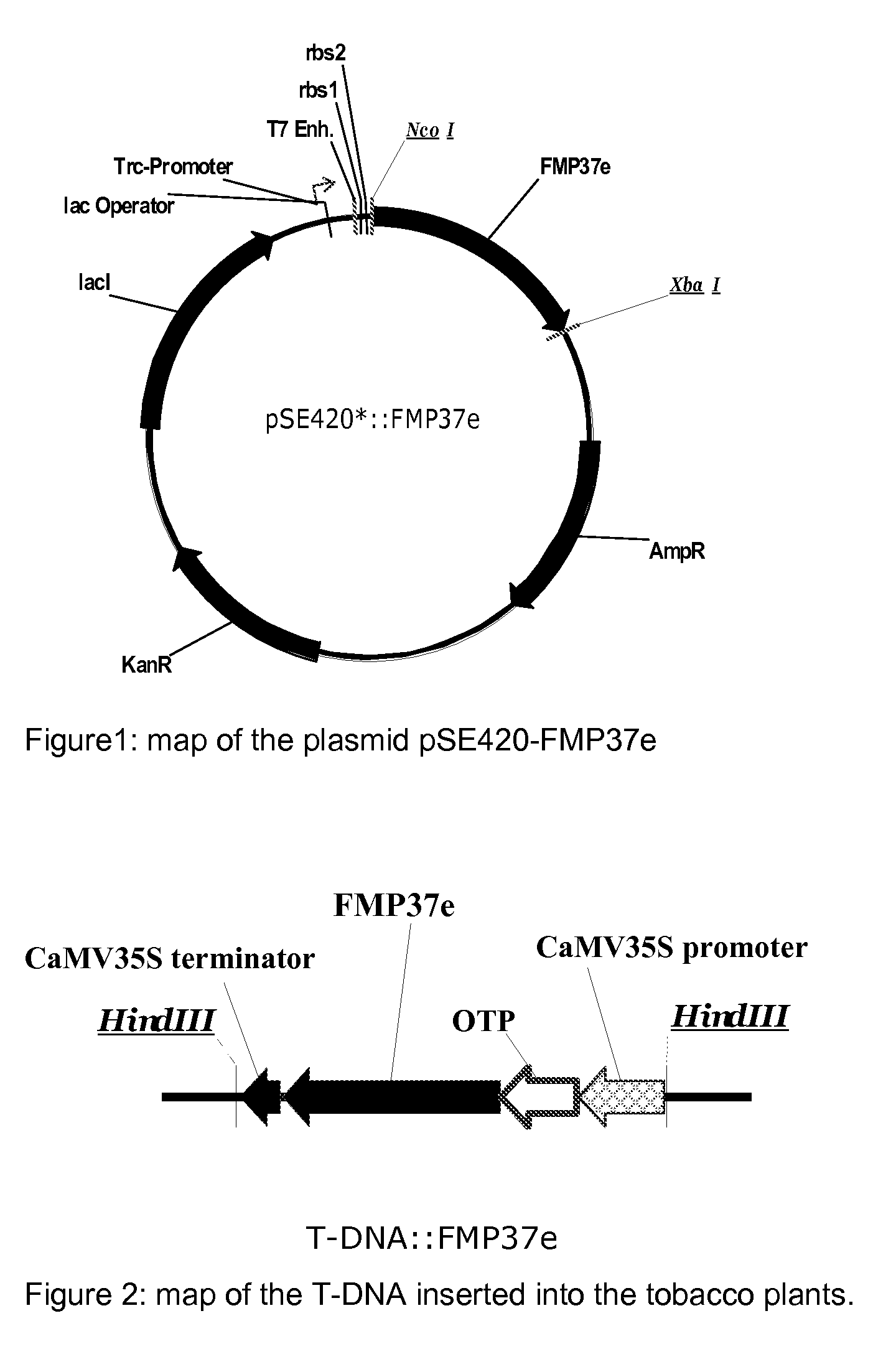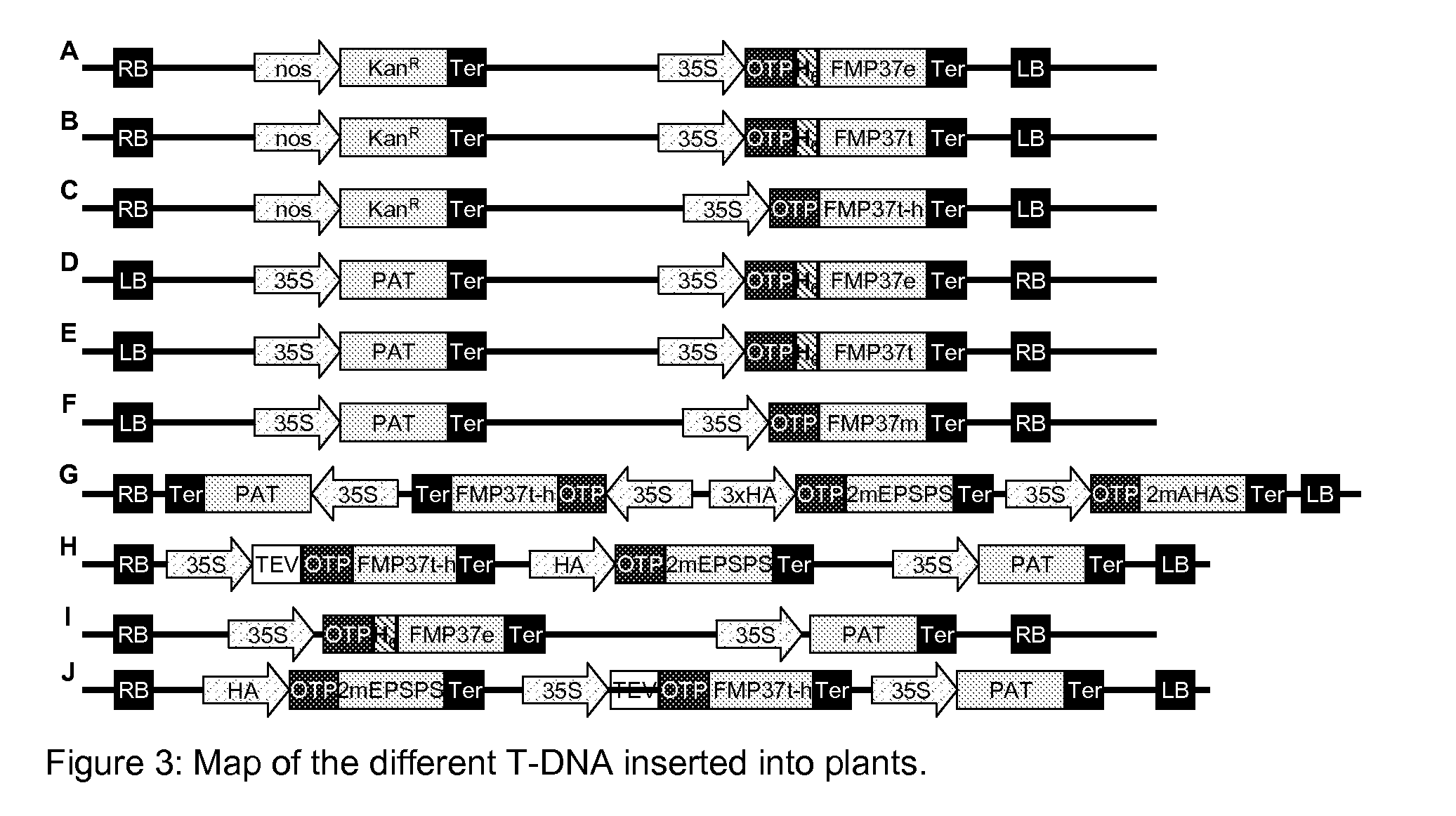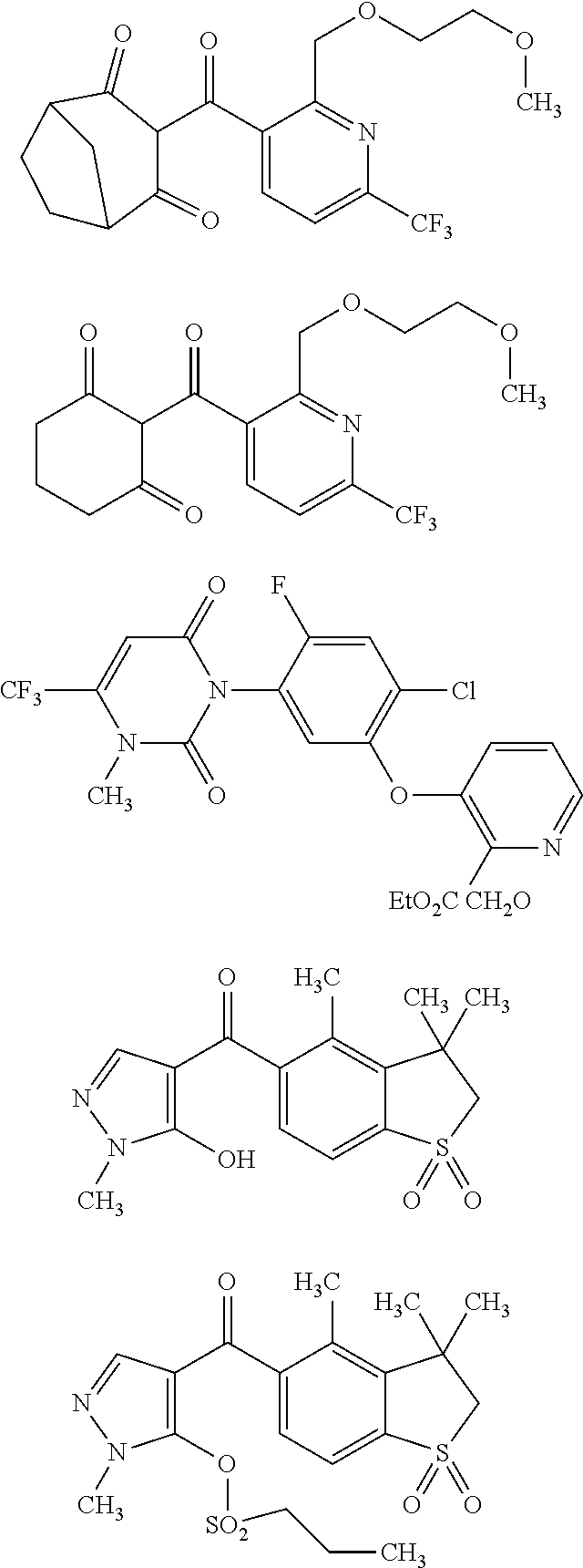Plants Tolerant to HPPD Inhibitor Herbicides
a technology of hppd inhibitors and herbicides, applied in the field of plants tolerant to hppd inhibitor herbicides, can solve the problems of chlorophyll destruction by ultraviolet light radiation and reactive oxygen species, uncoupling of photosynthesis, and deficiency of accessory light-harvesting pigments
- Summary
- Abstract
- Description
- Claims
- Application Information
AI Technical Summary
Benefits of technology
Problems solved by technology
Method used
Image
Examples
example 1
[0247]Preparation of Blepharisma japonicum HPPD (named FMP37e) of SEQ ID No. 5 and of the Arabidopsis thaliana HPPD identified by SEQ ID No. 10.
[0248]The Arabidopsis thaliana AtHPPD coding sequence (1335 bp; Genebank AF047834; WO 96 / 38567) was initially cloned into the expression vector pQE-30 (QIAGEN, Hilden, Germany) in between the restriction sites of BamHI and HindIII. The obtained vector was called “pQE30-AtHPPD”.
[0249]The original Blepharisma japonicum HPPD sequence (1149 bp) coding for the protein listed under the accession number A8R3H6 at UniProtKB / TrEMBL was modified and synthesized using an Escherichia coli K12 optimized codon usage (Eurofins MWG operon (Ebersberg, Germany), GENEius software) and cloned in a modified pBluescript vector (Eurofins MWG operon, Ebersberg, Germany). In this vector, the sequence corresponding to the MCS (multiple cloning site) was partially removed that only the sequences corresponding to the recognition of the restriction enzyme HindIII remain...
example 2
[0263]Kinetic characterization and evaluation of tolerance to HPPD inhibitors of HPPD enzymes “SEQ ID No. 5” and “SEQ ID No. 10”.
[0264]The HPPD activity was checked by the standard spectrophotmetric assay (method extensively described in WO 2009 / 144079)
Determination of HPPD In Vitro Kinetic Properties
[0265]Km, Vmax, and kcat values for different HPPD enzyme preparations and Ki, K1=Kon, and K−1=Koff for different HPPD inhibitors were determined using a HPLC assay for measurements of HPPD activity. The assay mixtures contained in a volume of 1 ml 150 mM Tris-HCl buffer at pH 7.8, 10 mM sodium ascorbate, 650 units of bovine catalase (Sigma C30 (Sigma-Aldrich, Munich, Germany), 34 mg protein / ml, 23,000 units / mg), and appropriate amounts of HPP, purified HPPD enzyme and HPPD inhibitors. For Km, Vmax, and kcat value determination HPP concentrations in the assay mixture were varied between 10 and 400 μM. For Ki, K1=Kon, and K−1=Koff value determination 2 mM HPP was used. All assays were st...
example 3
Construction of Chimeric Genes for the Evaluation HPPD Inhibitor Herbicide Tolerance in Tobacco Plants
A) Construction of the Chimeric Genes
[0272]The vector pRP-RD224 (extensively described in WO 2009 / 144079) containing the sequence coding for the OTP was used for PCR-mediated attachment upstream of the nucleic acid sequence corresponding to the recognition site of the restriction enzyme Xhol and downstream of the nucleic acid sequence corresponding to the recognition site of the restriction enzyme Ncol. The obtained PCR product was cloned in the vector pCR®-Blunt II-TOPO® (Invitrogen, Karlsruhe, Germany) following the user manual instruction. The resulting vector was called “pCR-TOPO-OTP”. The insertion of the correct sequence was confirmed per standard DNA sequencing. The DNA corresponding to the OTP was digested with the restriction enzymes Ncol and Xhol, separated per appropriate gel electrophoresis and cloned into the plasmid pRT100 (Toepfer, (1987), Nucleic Acids Res 15:5890) p...
PUM
| Property | Measurement | Unit |
|---|---|---|
| Fraction | aaaaa | aaaaa |
| Area | aaaaa | aaaaa |
| Area | aaaaa | aaaaa |
Abstract
Description
Claims
Application Information
 Login to View More
Login to View More - R&D
- Intellectual Property
- Life Sciences
- Materials
- Tech Scout
- Unparalleled Data Quality
- Higher Quality Content
- 60% Fewer Hallucinations
Browse by: Latest US Patents, China's latest patents, Technical Efficacy Thesaurus, Application Domain, Technology Topic, Popular Technical Reports.
© 2025 PatSnap. All rights reserved.Legal|Privacy policy|Modern Slavery Act Transparency Statement|Sitemap|About US| Contact US: help@patsnap.com



